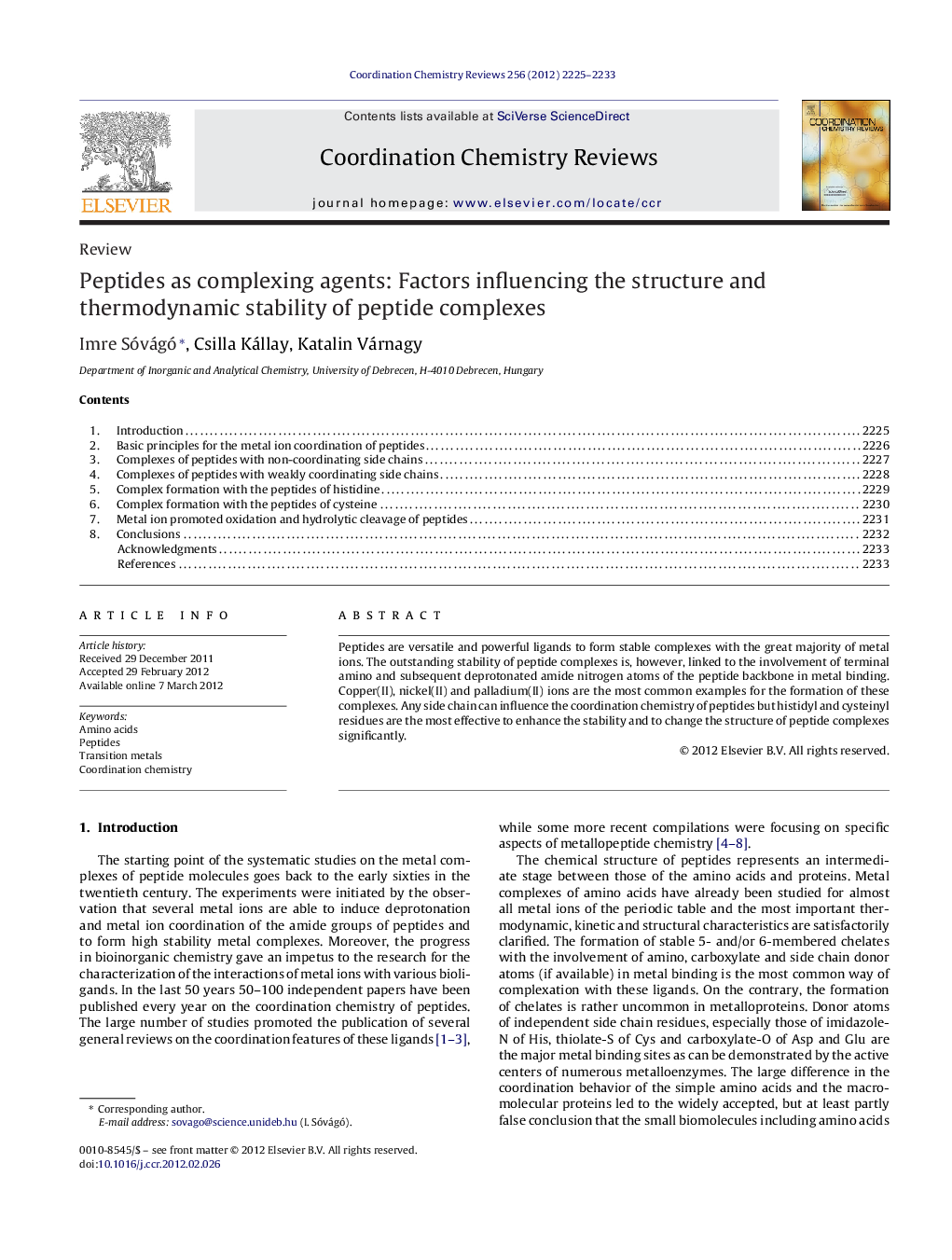| Article ID | Journal | Published Year | Pages | File Type |
|---|---|---|---|---|
| 1299696 | Coordination Chemistry Reviews | 2012 | 9 Pages |
Abstract
Peptides are versatile and powerful ligands to form stable complexes with the great majority of metal ions. The outstanding stability of peptide complexes is, however, linked to the involvement of terminal amino and subsequent deprotonated amide nitrogen atoms of the peptide backbone in metal binding. Copper(II), nickel(II) and palladium(II) ions are the most common examples for the formation of these complexes. Any side chain can influence the coordination chemistry of peptides but histidyl and cysteinyl residues are the most effective to enhance the stability and to change the structure of peptide complexes significantly.
Related Topics
Physical Sciences and Engineering
Chemistry
Inorganic Chemistry
Authors
Imre Sóvágó, Csilla Kállay, Katalin Várnagy,
